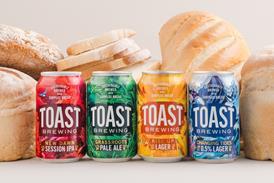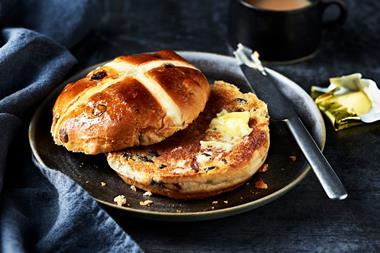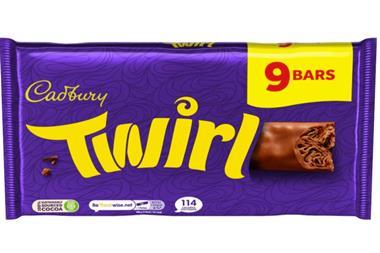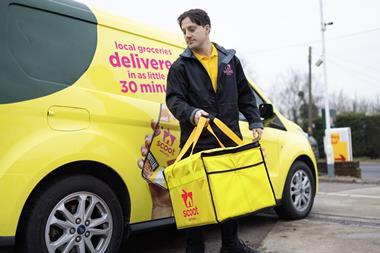Group CEO Jonathan Hart plans a more personalised experience on the high street and more sales through supermarkets. Hannah Stodell reports
After years of declining store sales, Thorntons boss Jonathan Hart has set out his vision for de-risking the business and restoring sustainable growth.
He successfully transformed Caffè Nero in the UK, doubling the size of the business during his five years as MD. But will he be able to overhaul Thorntons’ retail estate? Or after four profit warnings in less than a year and the planned closure of up to 180 stores, is it set for further meltdown?
Hart brought a personalised coffee experience to shoppers on the high street and hopes to replicate this model with Thorntons, moving it away from a commoditised offering. His strategy, unveiled this week, seeks to “do more, executed better, on a smaller scale” and will see Thorntons close the stores over the next three years: 120 will go from the 364-strong estate as leases expire, and a further 60 are under threat. Closed owned stores will be replaced with franchises of which it has 227 in most locations and the company may re-site or open new stores in other top UK retail locations.
The closures will come at a cost of £4.2m to £4.8m but savings in supply chain and central costs are expected to yield more than £2m annually, which will filter through from 2012/2013. A simultaneous warehouse and distribution outsourcing agreement with DHL is expected to deliver a net benefit of more than £5m over six years.
Within its own stores where sales have declined 12.6% on a like-for-like basis for the three months to 30 April Hart plans to build a “differentiated and less seasonal” business to entice existing customers to visit more frequently and buy more often. Thorntons’ May update blamed hot weather for a sales slump but its over-reliance on occasions such as Christmas and Easter, a lack of investment in its stores and pressure on household budgets have all taken their toll. Mintel research shows consumers are treating themselves less often and to less chocolate but Hart hopes to buck the trend with more choice for gifting under £5, a new customer sampling programme and a flagship boxed brand next year all to hit other occasions such as birthdays, anniversaries, congratulations and thank yous.
“We want to display more products loose, out of box, with less packaging and more space for the quality to be displayed,” says Hart, adding that the reduction in the own-store channel will have a halo effect on sales across the whole business, especially the commercial channel selling to supermarkets. “This will become the main sales channel over the next three years,” he says, with online service Thorntons Direct aligning itself more closely with the store offer.
Hart rejects the suggestion that by pumping more chocs through the mults, the company risks cannibalising its own store offering and says each channel will offer its own distinct proposition. “Our own stores play a very important role in bringing our brand to life,” he says. “The value of that is then played out to the benefit of sales in all our channels.”
The new £57.5m credit facility recently agreed with the banks and maturing in October 2015 signals “clear support” for the latest plans, claims Hart, but others in the City are more cautious and investors appeared unconvinced, with shares losing more than 4p by market close after the strategy was revealed on Wednesday.
The real acid test, says Execution Noble analyst Sanjay Vidyarthi, will be whether Hart can hold on to shoppers when it shifts owned stores over to a franchise. “They’re saying they need 50% of sales to transfer from own stores to franchise to get the same level of profit contribution. It’s not an unreasonable sales number but it’s ambitious,” he says, predicting a lag in sales in the short term until the dust settles.
And while its commercial arm has improved operational efficiency for the company and appears buoyant with sales up 25% to £27.7m for the three months to 30 April it is facing other challenges. “The question is at what point do supermarkets decide to squeeze it on margins,” warns Vidyarthi.
While Hart’s retail experience is sound, the company he has inherited faces structural and strategic challenges from almost every direction. Shore Capital head of research Clive Black points to pressure from branded rivals such as Lindt, dampened consumer spending, a large store-based model and the reduced cachet of speciality confectionery. These pressures, coupled with a challenging cost base, leave it looking vulnerable.
“Thorntons has overexpanded beyond its brief and is now trying to pull in the fishing line to provide something more palatable, but it’s very questionable whether it’ll get there or not.”
Sign in to comment on this article
Not logged in before? Register for FREE guest access today.
You will be able to:
- Read more stories
- Receive daily newsletters
- Comment on stories
Advert



















No comments yet